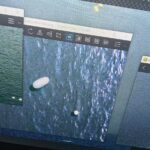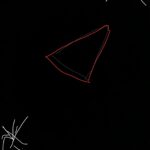
Интересная статья о новом подтверждении того, как работают гравитационные волны. Вероятно, это совпадение, но последний абзац кажется поразительным в свете заявлений Груша и спекуляций здесь и в других местах о том, что технологии NHI могут выйти далеко за рамки нашего нынешнего понимания законов физики. Конец статьи: работа, по ее словам, должна предложить более глубокое понимание того, как формируются и развиваются галактики. Это может даже открыть новую экзотическую физику, которая изменит наше фундаментальное понимание космоса: «Это должно быть очень, очень интересно». Ссылка для прохождения платного доступа: https://wapo.st/44GbJJ1











**Summary:** Scientists have detected gravitational waves from supermassive black holes for the first time. This is a major breakthrough in astronomy, as it provides new insights into the formation and evolution of these massive objects.
The gravitational waves were detected by the NANOGrav collaboration, which uses a network of radio telescopes to search for these waves. The waves were generated by the mergers of supermassive black holes, which are billions of times the mass of our sun.
The detection of these gravitational waves confirms Einstein’s theory of general relativity, which predicts that gravitational waves exist. It also provides new evidence for the existence of supermassive black holes, which are some of the most mysterious objects in the universe.
The discovery of these gravitational waves is a major step forward in our understanding of the universe. It opens up new possibilities for studying the formation and evolution of black holes, and it could help us to better understand the nature of gravity itself.
Website of the organization: [https://nanograv.org/](https://nanograv.org/)
Alternative link to article: [https://apnews.com/article/gravitational-waves-black-holes-universe-cc0d633ec51a5dc3acb0492baf7f818a](https://apnews.com/article/gravitational-waves-black-holes-universe-cc0d633ec51a5dc3acb0492baf7f818a)
A lot of physics articles mention the ideas of “new physics” especially when concerned with particle physics and the likes. There are a lot of things we don’t know in physics, so when looking at the cutting edge of physics research it wouldn’t be totally unexpected to actually find “new physics”. Also note that “new exciting physics” to a physicists would be something rather mundane to the general population, something like an intermediate mass black hole or an unusually long lived particle or something.
I wouldn’t say this has anything to do with the recent events on this subreddit and instead looking for links where there are none.
here is a very nice Q/A by [Katie Mack](https://twitter.com/AstroKatie):
​
The news is out! The NANOGrav pulsar timing array collaboration has detected a background of cosmic gravitational waves rippling through our Universe! Let’s talk about it!
Q: What does this mean?
A: Whenever violent gravitational events (like colliding black holes) happen in the cosmos, it causes ripples in space itself: gravitational waves. This is the 1st detection of a “stochastic background” of these waves, coming from all over the cosmos.
Q: What are pulsars?
A: Pulsars are ultra-dense neutron stars (remnants of dead stars) that have jets of radiation coming from their poles & rotate rapidly. Typically the jet isn’t aligned with the pole, so it sweeps around. When it hits us, we get a pulse.
Q: What’s a pulsar timing array?
A: The pulsars in a PTA pulse at short (~millisecond) intervals, very regularly. If space is distorted between us & them by gravitational waves, it can delay pulses. By observing a LOT of pulsars, we can (in theory) tell waves are passing.
Q: What did NANOGrav see?
A: NANOGrav used 15 yrs of careful observations of the timing of 68 pulsars to figure out that the weirdnesses in pulse arrival times matched what you’d expect if gravitational waves — the kind from colliding supermassive black holes — fill space.
Q: How are PTAs different from LIGO/gravitational wave detectors on Earth?
A: LIGO sees GWs from star-mass black hole binaries, which orbit a few to thousands of times a second. PTAs can see extremely LOW frequency waves: supermassive BH pairs in orbits of months or years.
Q: So did NANOGrav detect supermassive black holes colliding?
A: Well, maybe. Probably! But so far we can’t be sure exactly what the gravitational wave background is coming from. Supermassive BH binaries are the expected source, but we need more data to be certain.
Q: What could it be if it’s not supermassive black hole collisions?
A: Technically the background is also consistent with weird stuff like ripples from cosmic inflation, phase transitions in the early universe, & even networks of defects in space. Could even be a combo!
Q: If it’s supermassive black holes, what does that tell us?
A: At the moment, all we can say is there’s a background consistent with more-or-less what we expect SMBHs to be doing. BUT with more data, we can study the build-up of galaxies through mergers across cosmic time!
Q: Is there anything surprising in the data?
A: The result (a gravitational wave background) isn’t surprising — it was surely there! But if it’s from supermassive BH binaries, best analysis suggests SMBHs might be more common &/or more massive than expected. Intriguing!
Q: Is it REALLY a new way of seeing the universe? We already had gravitational waves.
A: LIGO etc see higher-frequency GWs, from star-mass objects; PTAs see low-frequency GWs, from supermassive BHs. It’s like observing with visible light vs radio: you see different stuff!
Q: Give me a nice analogy.
A: The Earth is a ship on a cosmic sea. Every once in a while, we’re hit by a wave, and we know something went by. But now, for the first time, we can start to see the choppiness of the entire ocean, and we’re learning what else lives in our sea.
Q: Is NANOGrav the only group doing this?
A: Not at all! There’s a huge international group of pulsar timing array collaborations (see: PPTA, EPTA, CPTA) all announcing results today. NANOGrav got the first detection but combining data from all is crucial for learning more.
Q: How exciting is this, really?
A: Hugely exciting! We’re using RADIATION JETS from DEAD STARS to detect RIPPLES IN SPACE from the COLLISIONS OF SUPERMASSIVE BLACK HOLES ACROSS THE ENTIRE COSMOS. Honestly that’s just frickin’ awesome.
Q: OK but does it change our understanding of the Universe in a fundamental way?
A: Well, not really, because we did expect this, & we don’t have enough data yet to say much about the origin of the gravitational waves. But it’s just our first glimpse! Who knows what’s next‽
Q: What’s the most likely scientific breakthrough to come from this?
A: Other than the detection itself, we’ll learn a LOT about supermassive black holes, how galaxies merge/grow, & about the conditions at the centers of galaxies. It’ll help us understand our cosmic origins!
Q: How can I learn more?
A: Just about every science outlet has stories on it; here’s one from SETI: https://seti.org/press-release/nanogravs-15-year-journey-reveals-cosmic-hum. For some physics-student-level details, see: https://astrobites.org/2023/06/28/drop-the-bass-evidence-for-a-gravitational-wave-background-from-a-galaxy-sized-detector/.
The full press conference is tomorrow, 1pm Eastern: https://nanograv.org/news/2023Announcement
I hope we dont have to ride the big one ever. Who knows what these waves are cabable of when their point of origin is near.
On the other hand, these waves could be a nice way to send (slow) signals through space time.
While interesting there is no new physics here whatsoever, and although they measured some interesting effects, as they noted they cant attribute them yet to any specific cause ( e.g. SM black hole binaries).
This has no direct relationship to UFOs.
Yes, that’s pretty massive, we’ve already speculate on this announce, here:
[https://www.reddit.com/r/UFOs/comments/14g6nv3/major_announcement_from_the_nanograv/?utm_source=share&utm_medium=web2x&context=3](https://www.reddit.com/r/UFOs/comments/14g6nv3/major_announcement_from_the_nanograv/?utm_source=share&utm_medium=web2x&context=3)
It’s very interesting because it allows people to understand that our current gripping of the visible universe is limited and that there is still a lot of discover to do. Kind of humility lesson.
Maybe with that «dicover» (confirmation), people will start to consider that travelling isn’t not only related to distance, but to structure (for the good ol’ weak debunker argument «it’s too far they can’t visit us lol»). And that our knowledge of this structure is actually very limited, but today it’s a great leap 🙂
Can someone explain this to me like I’m 5 and by 5 I mean I can’t shake a migraine and my brain can’t do big sciencey thoughts?